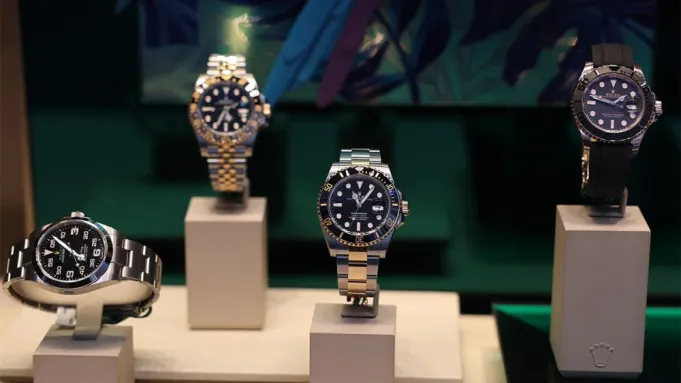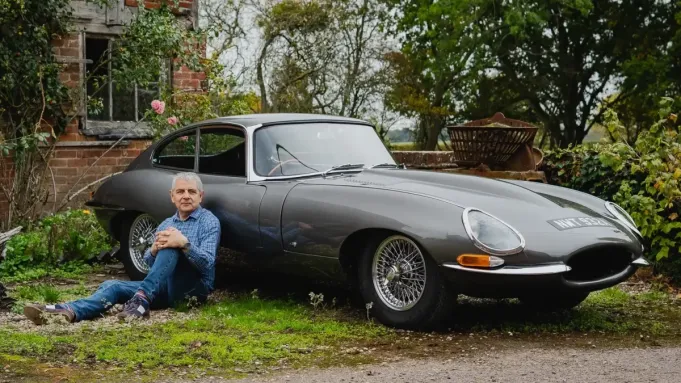
This story is from an installment of In the Loupe, our weekly insider newsletter about the best of the watch world. Sign up here.
It’s hardly news, but luxury watches are getting a lot more expensive. Brands are prioritizing their own monobrand boutiques over multibrand retail stores, despite clear signs that consumers prefer the latter. And vintage and pre-owned watches are of increasing relevance to younger buyers.
These are some of the takeaways for collectors from “Time Under Pressure,” the 11th edition of the Deloitte Swiss Watch Industry Study, released Oct. 8. Based on an online survey of 111 industry executives and over 6,500 consumers in 13 countries, the study—which was fielded in June and July, before President Trump’s 39 percent tariff on Swiss imports went into effect—takes stock of the watch industry during a precarious time.
“Overall, you see that the sentiment [among brand executives] is still focused on cost measures, being more efficient and sizing down because you don’t know what the future will hold,” Karine Szegedi, head of consumer industry and luxury & fashion at Deloitte Switzerland, tells Robb Report. “It’s a bit like when Covid hit. First thing was cost effectiveness. But now, there are a lot of crises. They come closer together and they’re sharper and quicker. But somehow, the watch industry always manages.”
One way executives are coping with the triple whammy of tariffs, the strength of the Swiss franc, and the soaring price of gold, which crossed the $4,000 an ounce threshold on Oct. 7, is by charging more for their timepieces.

The soaring cost of gold has also affected the watch market.
Bloomberg Creative Photos/Getty
“Most brands have raised prices since the first of September,” Szegedi says. “And of course, price increases are not only in the U.S., but mostly global because the Swiss franc is a problem for all the countries. You can’t have a big price differential between the U.S. and other markets because of the gray market, travel and so on.”
Another of the study’s key findings: Brick-and-mortars stores are more important than ever. Over 60 percent of respondents said they buy watches in store, with 51 percent saying they do so because they value the opportunity to try them on and 44 percent attributing their preference for physical shopping to the advice and personal interactions they experience in-store. Overall, multibrand stores are more popular among respondents (38 percent) than monobrand boutiques (23 percent), but generational attitudes differ. Boomers and Gen Xers appreciate the wide variety in multibrand emporiums (46 percent); younger generations, not so much (27 percent).
“What we see from practical examples is that when you buy your first watch or an important watch, you go to a monobrand store to get the breadth of the brand, and the sales executives are more trained,” Szegedi says. “But in the end, you say to yourself, ‘It’s a big investment. Would there be an alternative that maybe I like more or has a better price value?’ because that’s the No. 1 criteria that you would like to contrast and compare before you even do the sale. In a monobrand store, you can only compare with the same brand, but sometimes you would like to go outside of the brand. That’s what our female studies showed—that women feel more comfortable in stores that are not monobrands because they are often too focused on men and the watch. And sometimes women would like to maybe buy a bracelet or a ring or a watch.”
Despite consumer preferences, watch brands still appear to favor monobrand boutiques—41 percent of the senior executives surveyed said they plan to open a new monobrand boutique in the next 12 months.
Watchmakers keen to capture the interest of younger buyers would do well to offer a selection of vintage and pre-owned watches at their stores. According to the study, 40 percent of millennials and Gen Z intend to buy a pre-owned watch in the next 12 months, compared with just 20 percent of baby boomers. They’re drawn to their affordability (53 percent) as well as the access to unique or no longer available models (36 percent).

Omega recently opened its own boutique in Boston.
Omega
“Generation Z is redefining the watch market,” Szegedi says. “Their main criteria are affordability and uniqueness, as well as sustainability. The boom in pre-owned watches is no longer a niche trend. Rather, it is becoming one of the sector’s key growth drivers.”
Authors
-

Victoria Gomelsky
Victoria Gomelsky is editor-in-chief of the jewelry trade publication JCK and a frequent contributor to the New York Times and Robb Report. Her freelance work has appeared in AFAR, WSJ Magazine, The…
instagram:
Error: No feed with the ID 1 found.
Please go to the Instagram Feed settings page to create a feed.









